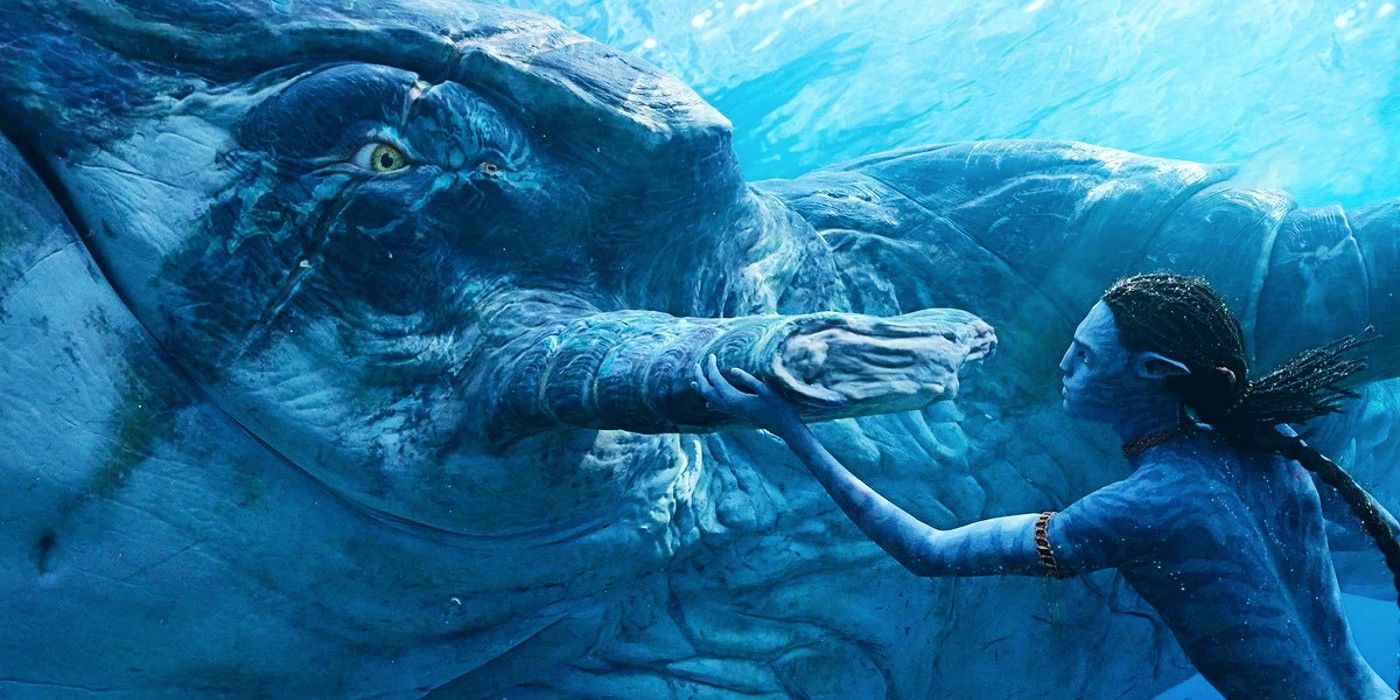[ad_1]
Eric Saindon, an Avatar: The Way of Water VFX supervisor, recalls the strange way the underwater scenes in James Cameron’s 2009 movie were filmed.
In contrast to Avatar: The Way of Water‘s real underwater filming methods, the original Avatar captured its underwater action in a very different way, reveals Weta FX VFX supervisor Eric Saindon. Released in 2009, James Cameron’s science-fiction/ fantasy epic represented a groundbreaking technical achievement in the world of visual effects. Avatar used innovative performance capture techniques and state-of-the-art CGI to depict Pandora and its native inhabitants, the Na’vi, methods that Cameron took to the next level in his recent sequel.
In a recent appearance on Corridor Crew‘s VFX Artist React series, Saindon explains the surprising way Jake Sully’s (Sam Worthington) brief underwater action scene in Avatar was filmed.
While Avatar: The Way of Water actually used underwater performance capture for its ocean scenes to lend them an enhanced sense of realism, the original film did everything on a sound stage with no actual water involved. In fact, one part of the scene was captured with Worthington being wheeled around on an office chair. Check out Saindon’s full explanation below:
“Well first, I’ll correct you in that Jake was sitting in an office chair with wheels getting pushed around the capture stage for the first movie. [Laughs] And going like this [motions swimming], so it was a very different experience. Just talking performance capture underwater, you can see it when all the characters are swimming. You understand that they’re in the water, because the way their arms are moving, the way they move around, it feels much more real, whereas if it was “Dry-for-Wet,” you always get that overacting, like, “Okay, pretend your underwater!” [Mimics fake swimming] You don’t want that, Jim would never let that happen, so putting them in water, they act like they actually are.”
Avatar: The Way of Water’s Groundbreaking Performance Capture Explained
In contrast to what is often referred to in the industry as motion capture, the performance capture system created for the Avatar movies allows more of the actors’ performances to come across in their CGI counterparts. From the subtlest facial movements and body language to how an actor runs, fights, or jumps, performance capture helps to sell that Avatar‘s Na’vi are real beings with real emotions. In the sequel, this performance capture system was taken to a new level entirely.
Since so much of Cameron’s sequel takes place in and under the water, the director knew that the only way to really film these sequences would be to actually put Worthington, Zoe Saldaña, Sigourney Weaver, and the rest of the cast in a large water tank. With scuba gear being a hindrance to the performance capture process due to the bubbles created, increased weight it would add to the actors, and facial obstruction, the cast of Avatar: The Way of Water learned to hold their breath for extreme durations in order to film their underwater scenes.
The results clearly speak for themselves, with characters moving and emoting underwater in Avatar: The Way of Water in a life-like way. While the underwater aspect of filming is a major standout from the sequel, Cameron’s follow-up movie also boasts a load of other developments in terms of visual effects, including enhanced textures, fluid simulations, and a marked increase across the board in terms of visual detail. With both Avatar and its sequel representing such huge leaps forward in terms of visual effects, expectations are undoubtedly high for future installments in the franchise.
Source: Corridor Crew
Key Release Dates
[ad_2]
Source link


